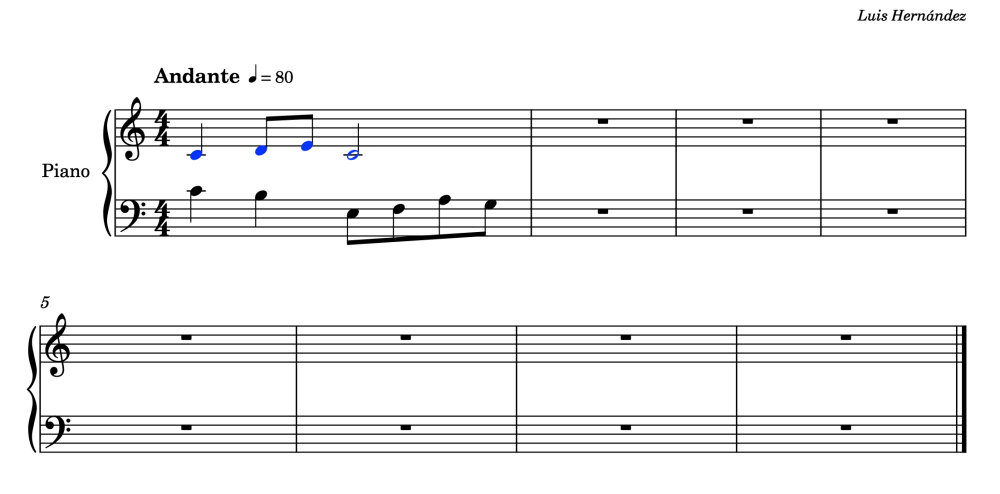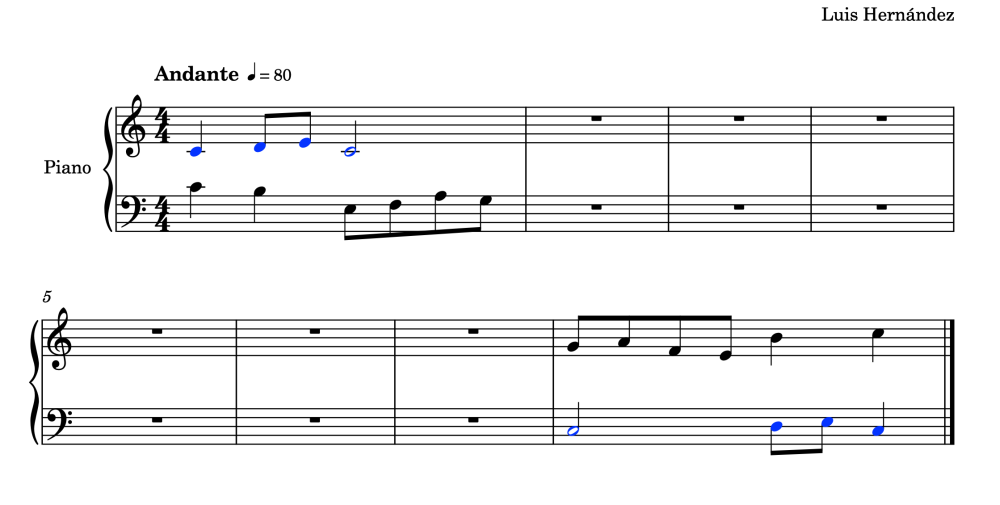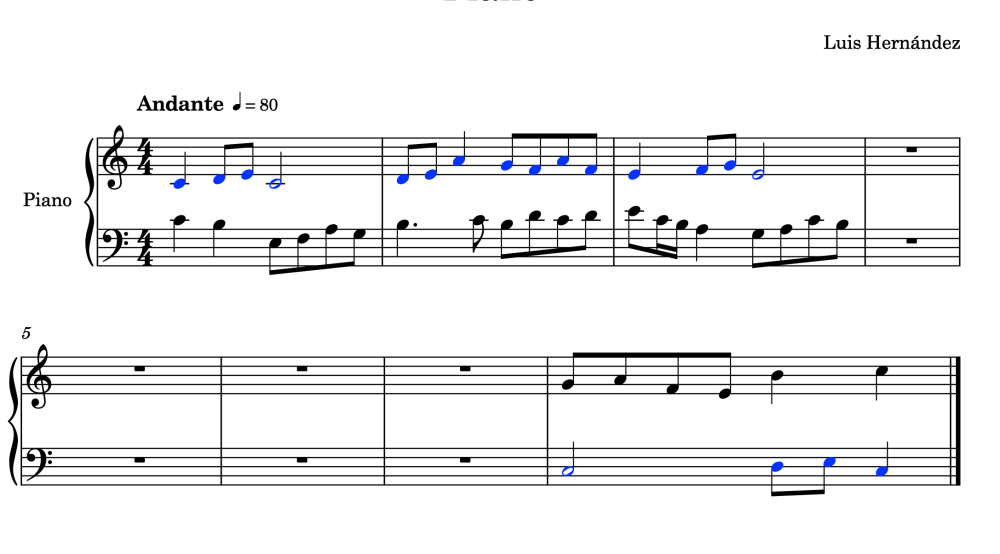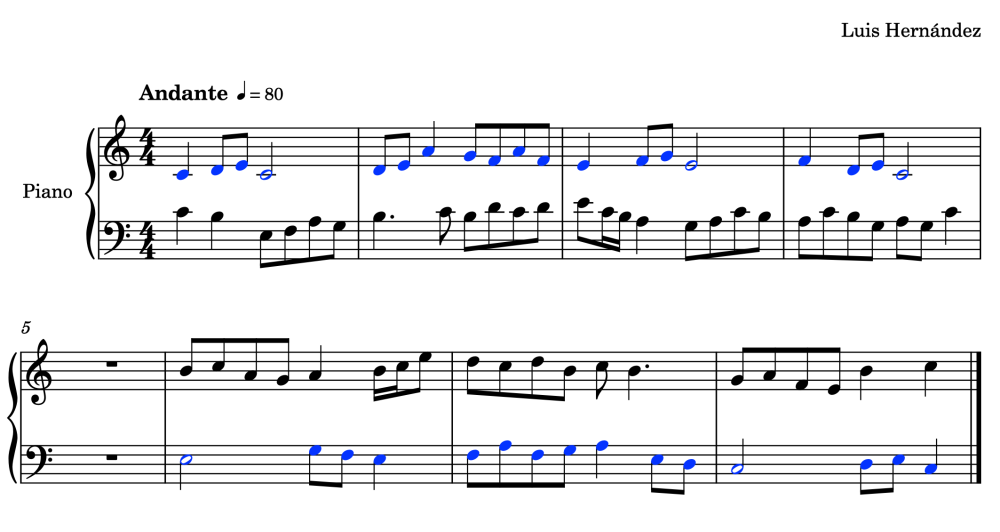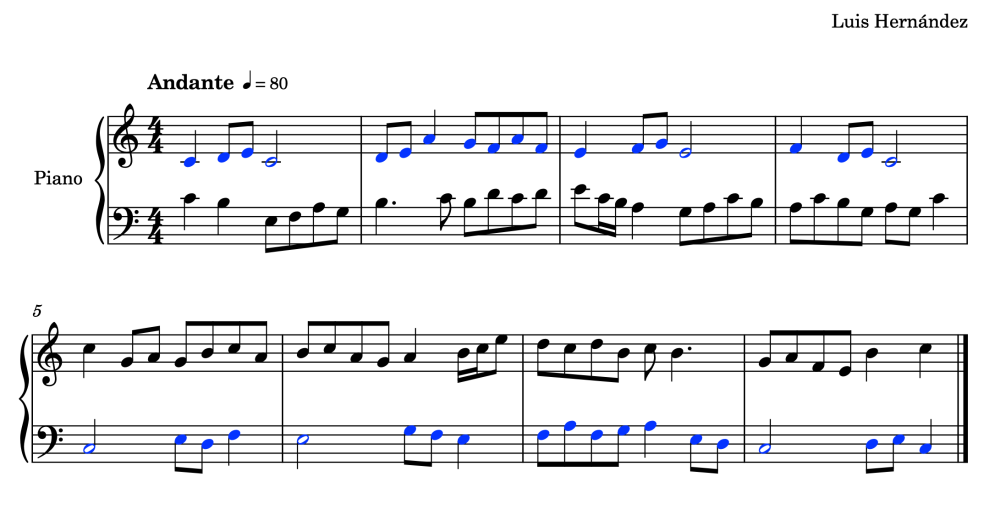Search the Community
Showing results for tags 'crab'.
-
This is a mini tutorial on how to write a two-voice crab canon. For more voices it gets more complicated, but it can be done. The canon should be written in invertible counterpoint to the octave, so that the voices can be interchanged. This means that all intervals in strong position must be unisons, octaves, thirds or sixths. Everything else is considered dissonant, including the fifth (because when inverted it becomes a fourth). Establish the length of the canon, which can be divided into two equal parts (8 bars, 16, etc...). Establish tonality, etc... First step: write the first bar, so that the intervals are as mentioned above. It is convenient to start both voices on the tonic, otherwise when inverting, there will be a third or fifth at the end of the bass and it sounds weak. Second step: write the last bar so that the upper voice moves to the lower voice written backwards and one octave down. The lower voice writes retrograde and one octave up. Third step: write two more bars in double or invertible counterpoint. Fourth step: transcribing the new measures to the end of the piece, as before: transposition to the octave and retrogradation. Fifth step: proceed in the same way until reaching the meeting point of the voices, it is convenient that this moment sounds cadential in the tonic or in the dominant. This is the result: crab canon.mp3 Afterwards, you can add ornaments, write dynamics, etc... There are, of course, many variations, but this is a first step. Writing a canon of this type in three or four voices, if you want to make it strict, is complicated because all the voices must be invertible. I managed to write a double crab canon (4 voices). I did it just as an exercise.
-
- 2
-

-
- canon
- cancrizans
-
(and 1 more)
Tagged with:
-
Hi The crab canon (cancrizans in Latin, cangrejo in Spanish) is know (wiipedia) as well as "retrograde canon, canon per recte et retro or canon per rectus et inversus)... is an arrangement of two musical lines that are complementary and backward. If the two lines were placed next to each other (as opposed to stacked), the lines would form something conceptually similar to a pallindrome. The name 'crab' refers to the fact that crabs are known to walk backward (although they can also walk forward and sideways). The most famous crab canon is the one Bach wrote for the Musical Offering. There are no many canon of this type, because it is more an exercise. It has its difficulty. The crab canon harmonizes one melodic line with itself in retrograde. So, you have to write a double (invertible) counterpoint, taking care of the fifth interval, because once inverted it becomes a dissonant fourth. So, fifths should be treated as dissonances. I have written, with time, some crab canon, just for fun and as a counterpoint exercise. But I had a concern with the possibility of writing a double crab canon. That is to say: two crab canon which can sound together. I have not seen any methods to to this. But I developed my own. I wrote a simple cancrizans 6 + 6 measures. Afterwards I wrote. second one in a lower register, having in mind the first. Third, I put both canon together. Fourth, I wrote the result with all the lines in retrograde. I think more combinations are possible, but taking care of the intervals. At least, it was fun. I'll keep this piece... Perhaps I use it in a larger format as a part of an orchestral work.
- 7 replies
-
- 2
-

-
- cancrizans
- crab
-
(and 2 more)
Tagged with:


